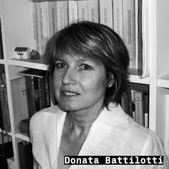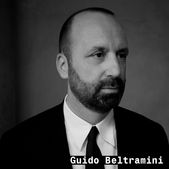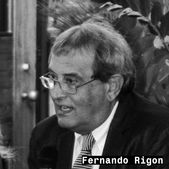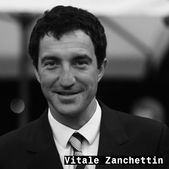61th course on Palladian Architecture
All PalladioVeneto, 27 August - 3 SeptemberGuido Beltramini and Howard Burns
Scholars
Donata Battilotti, Università di Udine |
|
 |
Donata Battilotti lectures on the history of architecture in the Arts Faculty at the University of Udine. Her study interests include Modern architecture, its patronage, construction sites, and relations with the history of the city and local area, mainly focused on Veneto, Friulian and Tuscan themes. She has dealt in depth with Palladio’s works and influence, the reconstruction of the urban image and countryside of 16th-century Vicenza through tax documents, Venetian villas, the construction of the Palazzo Comunale and squares of Piazza Contarena and Piazza I Maggio in Udine, 18th-century Friulian architecture, and commercial and manufacturing settlements in Leghorn and Florence during the Renaissance. She is a member of the cisaap Scientific Committee. |
Amedeo Belluzzi, Università di Firenze |
|
| He is professor of the history of architecture at the University of Florence, where he has been director of the Department of the History of Architecture and the City (2003 to 2008), and coordinator of Ph.D. courses in the history of architecture and urban planning (2000- 2008). He has also been scientific director of the journal Opus Incertum (2006-2012) and is a member of the Scientific Committee of the Andrea Palladio International Centre for Architectural Studies (CISAAP). His studies on the Quattrocento deal with works by Brunelleschi, Alberti and Giuliano da Sangallo, and themes such as central-plan churches. His largest group of essays and books focus on sixteenth-century architecture in Florence and Mantua. His surveys of Florentine architecture include studies on Medici residences, the buildings of merchants and courtiers, the Santa Trinita bridge and the Villa dei Collazzi. In the Mantuan area, his most significant studies are on the life, art and works of Giulio Romano, especially the Palazzo Te. His eighteenth-century research interests feature Lombard architecture in the age of Maria Theresa of Austria and Joseph II. He has also written on twentieth-century Italian and American architecture. | |
Guido Beltramini, Direttore CISA Andrea Palladio |
|
 |
Director of the Centro Internazionale di Studi di Architettura Andrea Palladio since 1991. He was Visiting Professor at the University of Ferrara (1994 -2002). In 2008, he was Craig Hugh Smyth Visiting Fellow at Villa I Tatti, Firenze, The Harvard University Center for Italian Renaissance Studies, in 2009-2010 at Columbia University, New York, in 2011 at the Canadian Centre for Architecture, Montreal. He studies the history of Renaissance architecture, with a particular emphasis on Veneto, the art of war and the culture of the Antique in the Renaissance. He has curated exhibitions and catalogues at the Biennale, Venice, at the Royal Academy, London, at the Pierpoint Morgan Library, New York, at the National Buiding Museum, Washington. His book Palladio Privato (2008) has been published in German (2009) and English (2012). He is member of the Board of Trustees of the Canadian Centre for Architecture and of the International Advisory Panel of ‘Architectural History. Journal of the Society of Architectural Historians. |
Howard Burns, Scuola Normale Superiore, Pisa - emeritus |
|
 |
Howard Burns is president of the cisaap Scientific Committee, having collaborated with the Centre since 1973, when he curated the section on the drawings in the major Palladio exhibition in Vicenza. He has curated exhibitions on Palladio in London (1975) and (with Guido Beltramini) in Vicenza, London, Barcelona and Madrid (2008). He is a member of the Accademia Olimpica and the Accademia di San Luca. He has taught at the University of Cambridge, the Courtauld Institute of Art, London, Harvard University, the Venice University Institute of Architecture (iuav), and the Scuola Normale Superiore di Pisa. He has played a leading role in preparing all the cisaap exhibitions as well as in organising exhibitions on Raphael (Rome, 1984), Giulio Romano (Mantua, 1989) and Francesco di Giorgio (Siena, 1993). He has published books or articles in international architectural journals on Filippo Brunelleschi, Leon Battista Alberti, Francesco di Giorgio, Raphael, Baldassarre Peruzzi, Giulio Romano, Pirro Logorio, Michele Sanmicheli and Michelangelo. |
Deborah Howard, St John's College, Cambridge |
|
 |
Deborah Howard is Professor Emerita of Architectural History at the University of Cambridge, where she is a Fellow of St John’s College. She is also a Fellow of the British Academy. She specialises in the art and architecture of Venice and the Veneto, and her numerous publications include Jacopo Sansovino (1975, 1987); The Architectural History of Venice (1980, rev. 2002); Venice & the East (2000); Architecture and Music in Renaissance Venice (2009); Venice Disputed (2011) and The Sacred Home in Renaissance Italy (with M. Laven and A. Brundin, 2018). She is currently engaged in a research project on the proto-industrial architecture of the Veneto in the sixteenth and seventeenth centuries. |
Paola Marini, Gallerie dell'Accademia |
|
 |
Paola Marini (Verona, 1952) si laurea nel 1976 presso l’Università di Bologna, dove si specializza nel 1987 in storia dell’arte medievale e moderna. Dal 1976 al 1980 collabora all’insegnamento di storia dell’architettura teatrale della stessa Università. Conservatore dal 1982 del Civico Museo-Biblioteca-Archivio di Bassano del Grappa, dirige quell’istituto dal 1988 al 1993, organizzandovi importanti mostre, fra le quali nel 1992 quella su Jacopo Bassano 1510-1592. Dal 1993 è conservatore delle raccolte d’Arte Medievale e Moderna dei Civici Musei e Gallerie d’Arte di Verona. Dal 1997 al 2015 dirige il complesso dei Musei d’Arte e Monumenti del Comune di Verona. Dal 30 novembre 2015 al 31 ottobre 2018 è direttore delle Gallerie dell’Accademia di Venezia. Dal 1998 al 2015 tiene l’insegnamento di Museografia e Museologia presso la scuola di Specializzazione in Storia dell’Arte dell’Università di Udine. Ha realizzato, oltre a centinaia di restauri, più di trenta fra mostre e convegni, progetti di ricerca ed editoriali, con importanti collaborazioni nazionali e internazionali. Nel 2015 riceve i premi Architetti Verona e 12 Apostoli; nel 2017 i premi Masi e FIAC a New York; nel 2018 il premio Cotisso. Nel 2017 riceve la Laurea honoris causa in Discipline artistiche conferita dall’Università degli Studi di Verona. I suoi studi vertono nel campo della storia della pittura, dell’architettura e della trattatistica architettonica dal XVI al XVIII secolo, con aperture all’arte contemporanea e alla museografia. |
Fernando Rigon |
|
 |
After graduating in the history of art from the University of Padua (1968), Fernando Rigon furthered his studies at the same university (1977) under S. Bettini, R. Pallucchini and L. Puppi. From 1976 to 1983 he was director of the Museo Biblioteca Archivio, Bassano. With Massimiliano Pavan, he launched the work of the National Committee for the Edition of the Writings and Correspondence of Canova in the Ministry of Culture (1981). From 1983 to 1991 he was director of the Museums and Conservator of the Civic Monuments of Vicenza. From 1989 to 2001 he was secretary of the Restituzioni programme, promoted annually by Banca Intesa. Since 1978 he has been a member of the Accademia Olimpica and since 1983 of the cisaap Scientific Committee. From 1978 to 1991 he was a member of the Regional Museums Committee and from 1988 to 1990 of the Civic Commission of the City of Padua for a New Museum System. Since 2001 he has been a consultant on cultural affairs for the Banca Popolare di Vicenza. Since 2000 he has been a member of the commission for the exhibition layout of the new Museo Diocesano, Vicenza, and in 2001-02 he supervised the new exhibition design of the Museo Civico, Asolo. In 2004 he was appointed a consultant to the 6th Commission of the Veneto Regional Council for the drafting a new law on cultural goods and activities (forthcoming). He is the author of around 200 publications in specialised reviews and in catalogues for exhibitions, museums and collections. |
Vitale Zanchettin, Musei Vaticani, Roma |
|
 |
Vitale Zanchettin (1967) laureato a Venezia con una tesi dedicata a Francesco Borromini (Venezia 1996) ha completato il dottorato di ricerca in storia dell'architettura in Germania tra le due guerre mondiali (Venezia Iuav 1999). Dal 2000 insegna storia dell'architettura moderna e contemporanea all'Università Iuav di Venezia. Come borsista della Bibliotheca Hertziana ha studiato lo sviluppo urbano di Roma nel primo Cinquecento (2001-2003). Ha condotto studi sull'opera di Carlo Scarpa (Cisa A. Palladio 2004-2006) e di Adolf Loos (2006-2007). Come borsista della Alexander von Humboldt Stiftung, della Bibliotheca Hertziana di Roma e del Kunsthistorisches Institut di Firenze ha studiato l'opera architettonica di Michelangelo (2006-2014). Dal 2010 è Membro del Consiglio Scientifico del Cisa A. Palladio di Vicenza. Attualmente è responsabile dell'Ufficio di Sovrintendenza ai Beni Architettonici dei Musei Vaticani. |